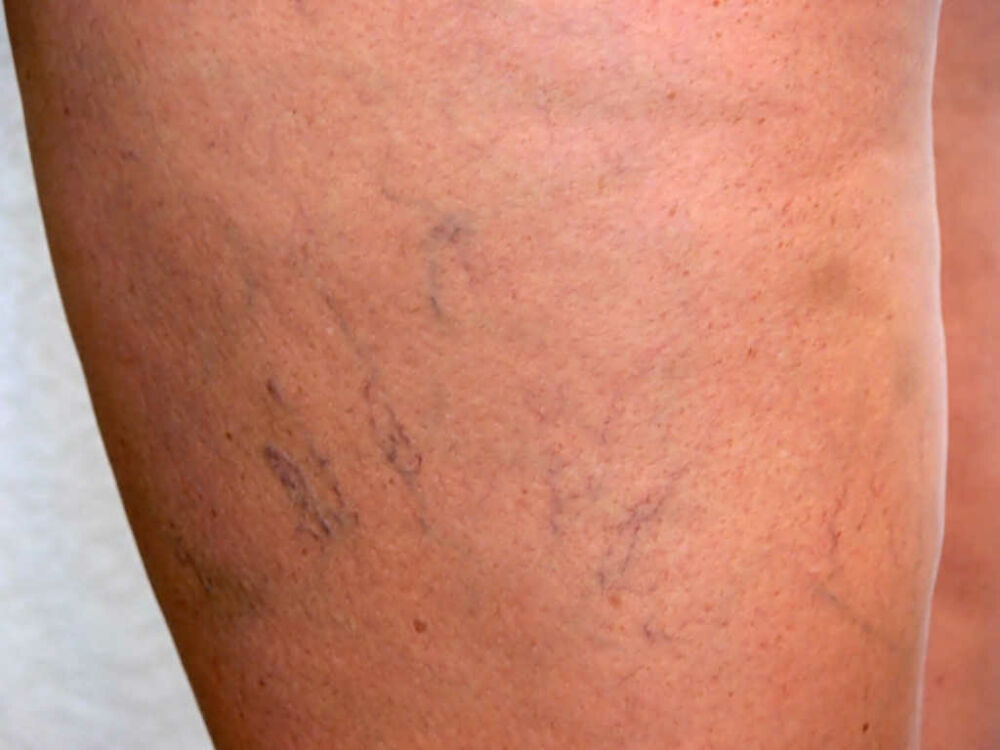
Are Those Varicose Veins or Spider Veins?
Though caused by the same venous disorder, varicose veins and spider veins have some distinct differences.

Spider veins and stretch marks can appear simultaneously and look similar. How do you tell them apart?
Spider veins and stretch marks can develop simultaneously, especially in pregnant women. Since both conditions can look similar, it’s easy to mistake one for the other. However, it’s important to understand that different factors cause spider veins and stretch marks.
Knowing whether those blemishes on your skin are spider veins or stretch marks will help you understand when and what treatment to seek.
Spider veins and stretch marks both usually form on the thighs as thin red or blue lines. Spider veins develop due to a problem in your veins. Instead of pushing blood back to the heart, weakened valves in your leg veins allow blood to backflow into the vein walls. As the blood pools, visible spider veins start to form. Spider veins are flat and can sometimes cause aching, burning, or itching.
On the other hand, stretch marks occur when the skin stretches, causing its connective fibers to tear and cause a scar. Although stretch marks may result from some medical conditions, they commonly develop with weight fluctuations.
Stretch marks may appear as indented streaks across the body. The first signs of stretch marks will appear red or purple as blood vessels become visible through the skin. Over time, however, the stretch marks will take on a silver or white color.
Both stretch marks and spider veins are considered cosmetic concerns. While there is a chance that spider veins can worsen due to the progressive nature of venous disease, they can be irritating or itchy. You can reduce the appearance (and worsening) of spider veins with at-home remedies such as:
Wear Compression Stockings. Compression stockings promote healthy blood flow by gently squeezing your veins. Compression stockings should feel tight but not uncomfortable. Avoid wearing too-tight clothing around the waist or groin, restricting your circulation.
Stay Active. We’re not saying you need to work out in a gym every day. A brisk walk will get the blood moving in your legs and prevent pooling. Avoid sitting or standing for long stretches as a sedentary lifestyle hinders circulation. If you must sit for a while, flex your ankles regularly or take short strolls around to stimulate your blood flow.
Stock up on Vitamin C. Vitamin C has healing properties that may strengthen your veins. The nutrient also increases collagen and elastin, making your skin more flexible. With stronger, more elastic skin, you’re also less likely to develop stretch marks.
If your spider veins are unsightly or irritating, you should seek treatment from a vein specialist. Today’s procedures are completed as brief outpatient visits and are minimally invasive, requiring little to no anesthesia. After a short recovery time, you’ll have smooth, unblemished skin.
Spider veins are a sign your veins aren’t functioning properly and need treatment. Center for Vein Restoration (CVR) operates three facilities in the Atlanta area, each led by experienced vein physicians:
Keith S. Moore, MD, is a board-certified general surgeon specializing in vein procedures.
Louis Prevosti, MD, FACS, is board-certified in thoracic and cardiovascular surgery.
James Fonger, MD, FRCS, is a board-certified physician in general and cardiovascular surgery.
Visit us to learn more or schedule an appointment online.
Camp Creek Medical Center
3886 Princeton Lakes Way
Suite 140
Atlanta, GA 30331
Northside Center Pointe
1100 Johnson Ferry Road NE
Suite 165
Atlanta, GA 30342
Gwinnett Professional Center
601 Professional Drive
Suite 170
Lawrenceville, GA 30046